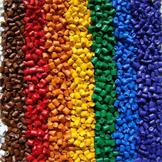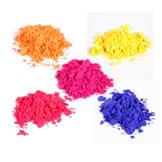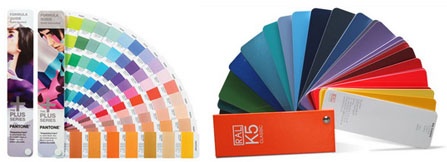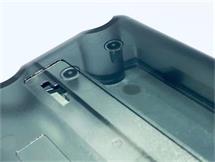Colored plastics are used every day in a huge range of applications and settings, but very few people know — much less stop to consider — how these hues could be achieved. With the years of experience working with the local color company, REACH has gathered information and insights into how plastic parts get colored.
Plastics can be colored using various coloring systems, each of which offers its own unique properties, benefits, and drawbacks. Masterbatches(color concentrates), ”salt and pepper” blends(colorant/pigment), Liquid Color, and pre-colored resins are four of the most common coloring techniques.


To color the injection-molded products we produce at REACH, we purchase “natural” polymers, such as Nylon, LDPE, ABS or Polypropylene, for instance, in pellet form. We then blend color concentrates, many from Color company through a dosing unit to dispense the colorant at anywhere from 1% to 4% typically. The dispensing unit is calibrated and then set to provide the exact amount of colorant to color any of the natural polymers we buy.
If you have a Pantone/RAL color code, there is no problem to color the material and run parts, and we could also do color according to the customer’s color sample, even a Tint color sample.


The Color Matching Process
To pinpoint the desired color for each plastic product or part, a color matching process must be completed, which allows engineers to develop a specific color concentrate for a particular application. Typically, a chip, plaque, or Pantone number provides an approximate idea of the desired hue, and information about the specific polymer being used helps determine the formulation for the color concentrate.
For each polymer being color-matched, various factors must be taken into consideration, including viscosity and melt processing temperatures. For example, a laboratory may use formulation guidelines to determine what carrier resins, pigment systems, stabilizers, or other additives would be suitable for the specific product and application at hand, as prescribed on the color match request form. It’s also important to keep in mind that colors will look different depending on the polymers’ gloss, appearance, and filler content; a color in nylon is going to look different from the same color in acrylic, for example. Environmental conditions, chemical resistance, and FDA suitability must all be taken into consideration when preparing a color match.
The color company can color match in any polymer system, some of which include nylon, polypropylene, polyethylene, polyesters, PVC, and acrylics. A color spectrophotometer is used to measure, store, and formulate colors using a computer color matching system. All colors and polymer systems are stored electronically in the color matching system — as well as in chip files or plaques produced in a laboratory during the color matching process.
Application Examples
Successful plastic coloring depends on close attention to minute details and adherence to unique application-specific requirements. For instance, REACH has completed injection molding processes for small window components; to ensure optimal functionality, such components require colorants that are resistant to fading as well as heat buildup. Or, for certain car components requiring an exact color match with other parts, our team must be sure that colors match precisely — under all types of lighting conditions and in comparison with very similar hues; white door handles must be an exact match with white-painted metal doors, for instance. And for any items that will come into contact with food or any plastics used in hygiene-critical medical applications or toys, strict regulatory requirements must be met to ensure optimal end-user safety.
Learn More
Specializing in high volume injection molding orders of more than 1,000,000 pieces, The REACH is proud to offer processes for a wide range of industries and applications — including medical, food and beverage, and window and door. To learn more about our rapid tooling, injection molding and prototyping capabilities, check our website for more info.
Start Your Projects with Free Quote Today
info@reach-mfg.com





